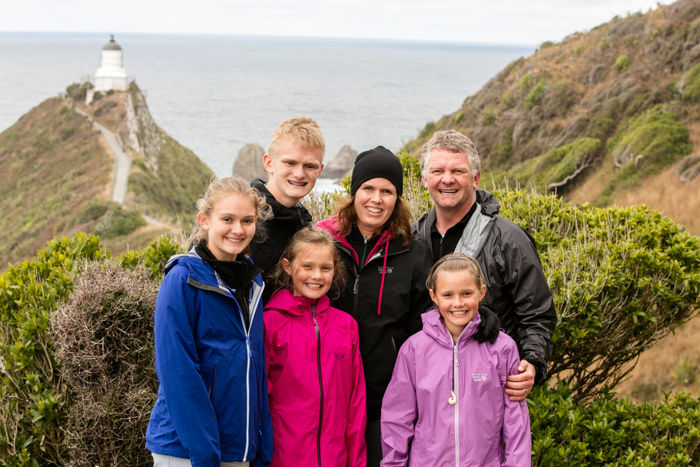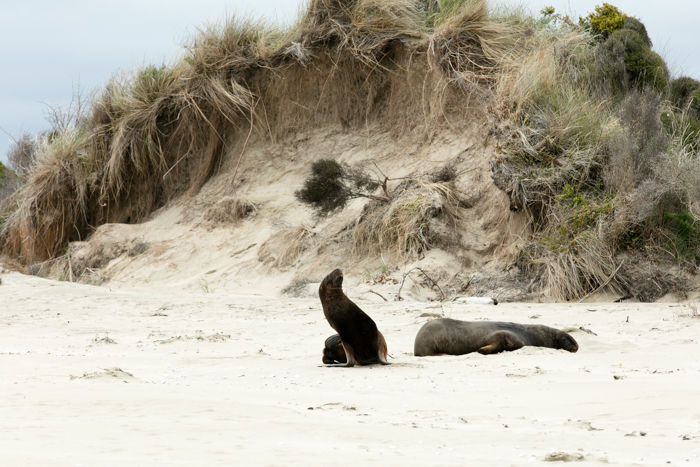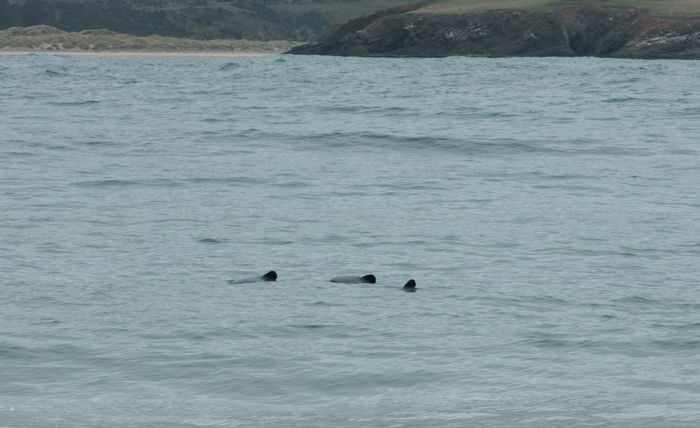Lions and Penguins and Dolphins, Oh My!
- Richard (Catlins, New Zealand)
- Jan 31, 2016
- 4 min read

With our Auckland to Dunedin trip and our long backpacking trip behind us, we have started looking for adventures closer to home. I have officially moved into my office over the coffee shop at University of Otago--a location that my colleagues have noted is sadly wasted on a Mormon. Coulter has started his online classes and next week the girls begin public school. Even with settling down, we are committed to continuing our adventures, just closer to home. Were were able to take a few days this week to explore a small region about an hour south of Dunedin called the Catlins. It's the boundary between the Otago Region where we live and the true southern coast in Invercargill. It is rugged--including both wind-whipped Pacific Coast and dense, green temperate rainforest. The towns are far apart with few people. It provided excellent practice for Sharman's driving (no cars and roads so tortuous that we rarely topped 60-km/hr). To our delight we found some of the most remarkable country we've seen so far without the crush of tourists.

We loved the green hills, the forest, and in particular our short hike to Paraukanui Falls, just a few km from where we stayed. It's been raining like crazy for the past week so the falls were magnificent. Certainly the short hikes and falls were beautiful, but what the Catlins are best known for is the Pacific Coast.

We drove to the Nugget Point lighthouse, marking a stormy coastline, riddled with shipwrecks. We hiked out to the lighthouse which gave us a great view of the "nuggets" as well as frolicking New Zealand Fur Seals.

To the south of point where the lighthouse sits is a protected cove that is home to one of the rarest penguins in the world. There are probably fewer that 4000 yellow-eyed penguins (hoiho in Maori) in the world and their populations are declining, principally due to habitat loss and introduced predators on the SE coast of New Zealand. The NZ Department of Conservation is serious about protecting the population here at Nugget Point while still letting the public view the birds. They close off the beach in the early afternoon when they start coming ashore but provide a protected hide from which you can observe them as they swim in. We showed up at about 8 pm and found this male preening and waiting for his mate to come ashore. The chicks hatched 1-2 months ago and both the male and female work cooperatively to feed the chick. After we watched him arrange his feathers for 20-minutes or so, he moved into the tall grasses at the base of the cliff. We were cold and ready to leave but then Eliza saw the penguin's mate swimming in on the surf. She gracefully swam through the waves only to less gracefully waddle across the shore to her mate. The two then moved to their cliffside burrow.

Southern New Zealand is a hotspot for rare species. In part they are rare because there aren't many signficiant land masses below 45 degrees south latitude and the isolation and unique conditions have produced speciation events. However, some of the rarity also comes from the impacts of hunting and invasive species in this region. Perhaps the rarest sea lion in the world (the New Zealand, or Hooker's, Sea Lion) is found only along this coast and on Campell's Island in the Southern Ocean. Estimates are that there are fewer than 10,000--and we saw half a dozen of them. Of course, they were just hanging out on the beach next to our Holiay Park. Here is a juvenile and female. Saturday morning I got up early and drove over Cannibal Bay where I found a big (1000 lb) bull and two other cows. The bulls are much more intimidating, as you can see in the video.

Saturday morning Sharman drove us from the north Catlins almost to the southernmost point in New Zealand. Eliza and Sophie really wanted to swim and we were hoping that it might warm up a little by the time we got to Porpoise Bay (it didn't). It has a resident population of rare Hector's dolphins. These dolphins are only found in New Zealand and are one of the smallest cetaceans (dolphins, whales, porpoises) in the world (adults are about 5 feet long). What we didn't expect is that we would roll out of the car and see them just off the shore. This relatively calm bay is a nursery for the dolphins and year round you can see the females and young swimming in the bay. Eliza couldn't be disuaded from swimming in the brisk southern Pacific in spite of us not bringing our wetsuits, so we jumped in the waves while watching the dophins 20 or 30 meters away. It was unbelievable.

We feel so blessed to be here. Just miles from our home are things we could never imagine. Rainforest cascades, sea lions, dolphins, penguins. Not a bad way to spend a weekend.

Comments